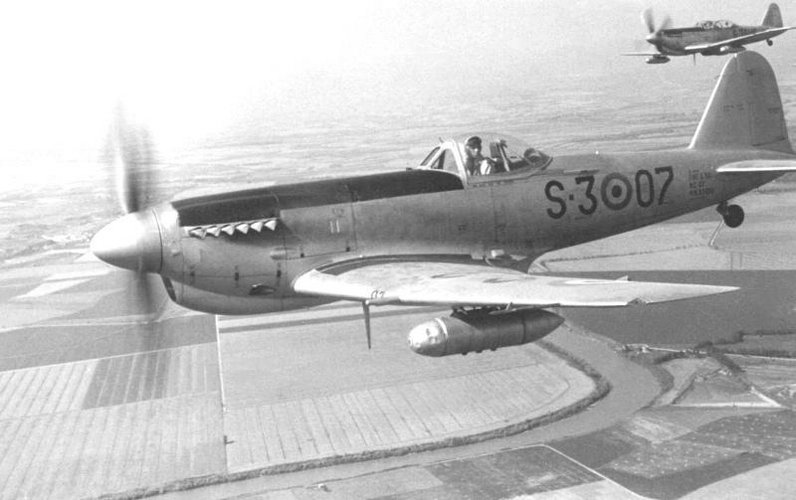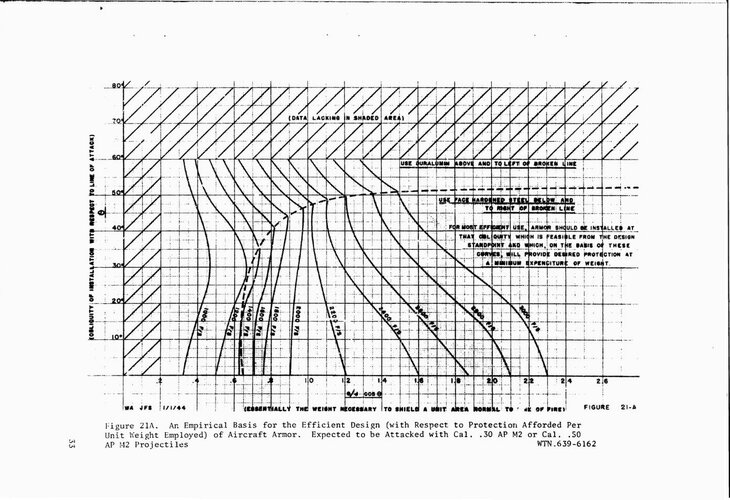Hi,
With the in-service date specified as January 1943, I'm not quite sure a Merlin with +18 lbs/sqin will be available to us. Based on the performance of the Spitfire IX running a Merlin 61 at +15 lbs/sqin, we might not have a margin for the low-altitude requirement at all.
Going to an inwards retracting main undercarriage in my opinion will actually increase weight, especially for an aircraft intended to be landed harder than the Spitfire.
I'd agree that a big-wing Spitfire would seem like a possible starting point, but with the requirement to withstand substantially higher loads than the historical Spitfire, a bigger and stronger wing will be substantially heavier than the historic Spitfire wing.
A big-wing Spitfire probably is good in terms of take-off performance, but all the extra weight is acting against it. Big flaps usually have the disadvantage of creating more of an unbalancing moment when extended, so the flapped big-wing Spitfire would probably need a longer and larger tail as well, which in turn requires the fuselage to be strengthened, further increasing weight. Additionally, this would make it more difficult to achieve an acceptable balance between evevator controllability and safety against inadverntant overloading in dives (which was a bit of a problem in the historic Spitfire already).
I would really leave it at 2, especially with the heavy 250 rounds per gun load prescribed. I don't think we can afford to add non-essential weight.
Heavy and complex, probably not good for maintenability.
Regards,
Henning (HoHun)
So from this then I'd take Spitfire VIII as the starting point with Merlin 60 series. A fair margin on the speed and time to climb requirements.
With the in-service date specified as January 1943, I'm not quite sure a Merlin with +18 lbs/sqin will be available to us. Based on the performance of the Spitfire IX running a Merlin 61 at +15 lbs/sqin, we might not have a margin for the low-altitude requirement at all.
At this point I'd also thicken up the wing a bit and move to inwards retracting main undercarriage. Slightly lighter structure, slightly reduced max Mach (in a very steep high altitude dive)
Going to an inwards retracting main undercarriage in my opinion will actually increase weight, especially for an aircraft intended to be landed harder than the Spitfire.
Maybe need increased wing area - reduces max speed but there's loads of margin.
I'd agree that a big-wing Spitfire would seem like a possible starting point, but with the requirement to withstand substantially higher loads than the historical Spitfire, a bigger and stronger wing will be substantially heavier than the historic Spitfire wing.
Who knows on take-off and landing performance; it's complicated. There's probably enough performance margin elsewhere to add some big Fowler/Young man flaps for a mass/drag penalty if needed.
A big-wing Spitfire probably is good in terms of take-off performance, but all the extra weight is acting against it. Big flaps usually have the disadvantage of creating more of an unbalancing moment when extended, so the flapped big-wing Spitfire would probably need a longer and larger tail as well, which in turn requires the fuselage to be strengthened, further increasing weight. Additionally, this would make it more difficult to achieve an acceptable balance between evevator controllability and safety against inadverntant overloading in dives (which was a bit of a problem in the historic Spitfire already).
Otherwise, 4 x cannons in the outer wings.
I would really leave it at 2, especially with the heavy 250 rounds per gun load prescribed. I don't think we can afford to add non-essential weight.
A counter-rotating prop to minimise gyroscopic effects.
Heavy and complex, probably not good for maintenability.
Regards,
Henning (HoHun)



